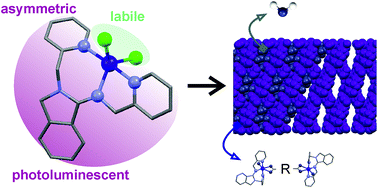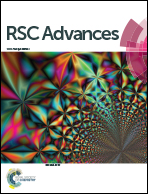Cobalt(ii) and copper(ii) supramolecular networks with a 1-iminoisoindoline asymmetric pincer†
Abstract
The first synthesis and characterization of cobalt(II) and copper(II) complexes with an in situ prepared novel asymmetric trinitrogen isoindoline-based pincer type ligand, N-(2-picolyl)isoindoline-1-(2-picolyl)imine (pap), are reported. Single-crystal X-ray structures of the cis-[M(pap)Cl2] (M = Cu, Co) complexes reveal the presence of rare seven-membered chelate rings as well as various coordination geometries and packing modes. The water-soluble complexes were found to react with dicarboxylate ions, terephthalate (ta) and succinate (suc), forming three new compounds {[M(H2O)(pap)]2(μ-ta)}·ta·xH2O (M = Cu and Co) and {[Co(pap)(suc)]·xH2O}n. Their single-crystal X-ray structures are reported and discussed. The rigid ta ions facilitate the formation of binuclear hydrated supramolecular frameworks, whereas the flexible suc linker binds [Co(pap)]2+ moieties into 1D zigzag chains. The chains are non-covalently organized into a supramolecular network. The bulky pincer ligand, responsible for the luminescent properties, was found to be inert in these reactions and to facilitate a unique supramolecular architecture through π–π stacking interactions. The compounds presented in this work may have wider applicability, as molecular building blocks, in the construction of either discrete polynuclear clusters or extended networks with desirable properties.


 Please wait while we load your content...
Please wait while we load your content...